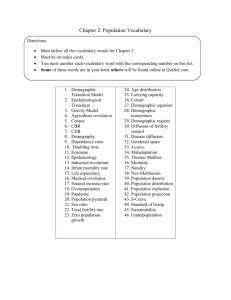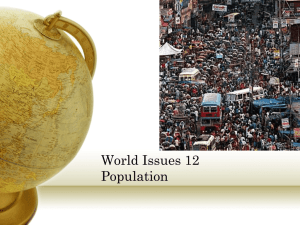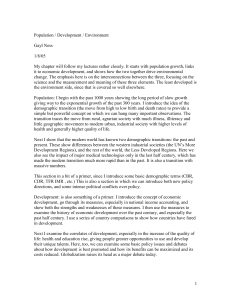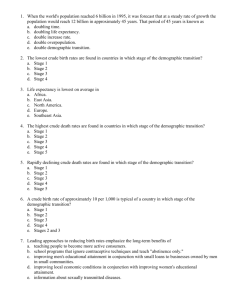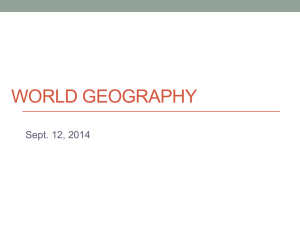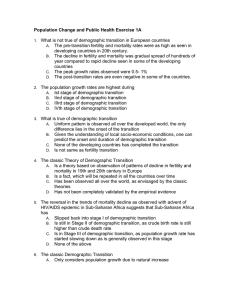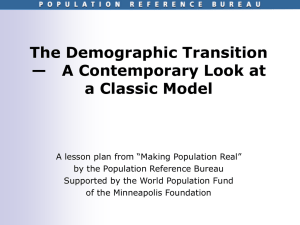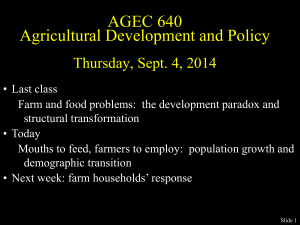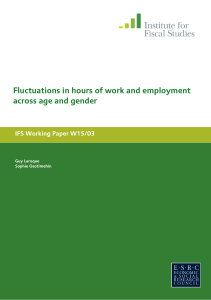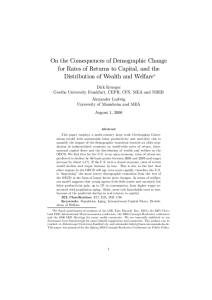The World at 7 Billion
advertisement
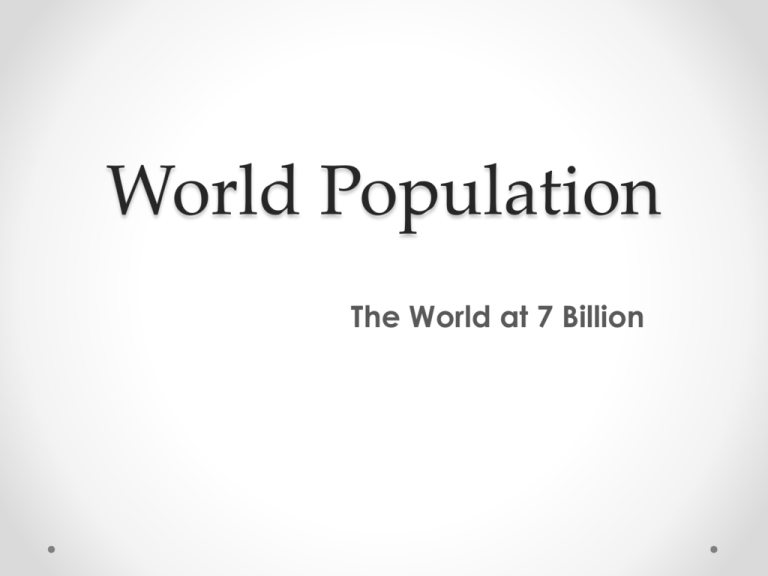
World Population The World at 7 Billion Quick Write • What factors may cause us to see an increase or decrease in world population? • What possible effects does an increase in world population have on society? Demographic Transition • Dramatic changes followed first the Agricultural Revolution some 8,000 years ago • Also occurred following the Industrial Revolution 250 years ago o Improvements in food supply and changes in health and hygiene triggered unprecedented population growth Demographic Transition • Throughout much of history human populations have been characterized by relative stability • High birth rates and high death rates fluctuating around a low growth equilibrium. The Classic Stages of Demographic Transition Phase 1 Phase 2 Phase 3 High Birth Rate, Declining Birth Birth Rate Fluctuating Death and Death Rates Approaching Rate Replacement Phase 4 Low to Very Low Birth Rate, Very Low Death Rate Birth rate Natural increase Death rate Time Note: Natural increase or decrease is the difference between the number of births and deaths. The birth rate is the number of live births per 1,000 population in a given year. The death rate is the number of deaths per 1,000 population in a given year. The Four Phases of Demographic Transition • In Phase 1 there is a fluctuating death rate o In the parish of Mouy, France there were 47 burials recorded in 1693 and in 262 in 1694 o A rise in the price of grains meant more people could not afford food • In Phase 2 death and birth rates begin to fall more regularly o Roughly the beginning of the Industrial Revolution • Increasing urbanization lessened the need for children • Public health measures improved life spans. • In Phase 3 Birth rates increased o In the aftermath of World War II the benefits of public health and modern medicine became available o Mortality fell rapidly but the desire for large families existed • In Phase 4 low death rates combined with low birth rates o There was mounting concern over record rates of population growth so birth rates began to fall in many countries Demographic Transition This classic model is based on the experience of Western Europe, in particular England and Wales. Year Crude Birth Rate Crude Death Rate Population (millions) 1750 40 40 6 1800 34 20 9 1850 34 22 18 1900 28 16 32 1950 16 12 44 2000 11 10 60 The Four Phases of Demographic Transition: Evident Today Around the World PHASE 1 Afghanistan Uganda Zambia PHASE 2 Ghana Guatemala Iraq PHASE 3 India Gabon Malaysia PHASE 4 Brazil Germany Japan Birth Rate 44 46 46 Death Rate 16 12 15 31 30 35 8 6 6 23 27 21 7 9 5 15 8 8 6 10 9 7 Billion People • The Population is now estimated at over 7 billion. o This doubled the population of 1965. o The recent growth in the size of World Population is more rapid that ever before. o Birth and death rates are affected by many events throughout world history • Technological and social factors influence where, when, and why population size changes Rapid Population Growth • The World is in the midst of its most rapid population growth in history o Annual population growth rate has declined to 1.2 percent per year but world population grows by about 83 million annually. • While declines in birth rates have been virtually universal across countries, the pattern of decline has been very variable. o In some countries, birth rates have fallen below two children o Birth rates in other countries have decreased to medium levels or have barely begun to decrease. o Population projections assume that birth rates in developing countries will decline to two children or fewer • Both the sixth billion and seventh billion were reached in the same number of years: a record 12. o The eighth billion may also take 12 years but only if birth rates decline according to projections. Predictions • The UN estimates that world population will be over 10 billion by 2100. o How might your life or your children’s lives be different if this is true? o What advancements do you think would have to be made in education, medicine, environmental issues, and food and water supply in order to support a global community of 10 billion people?
